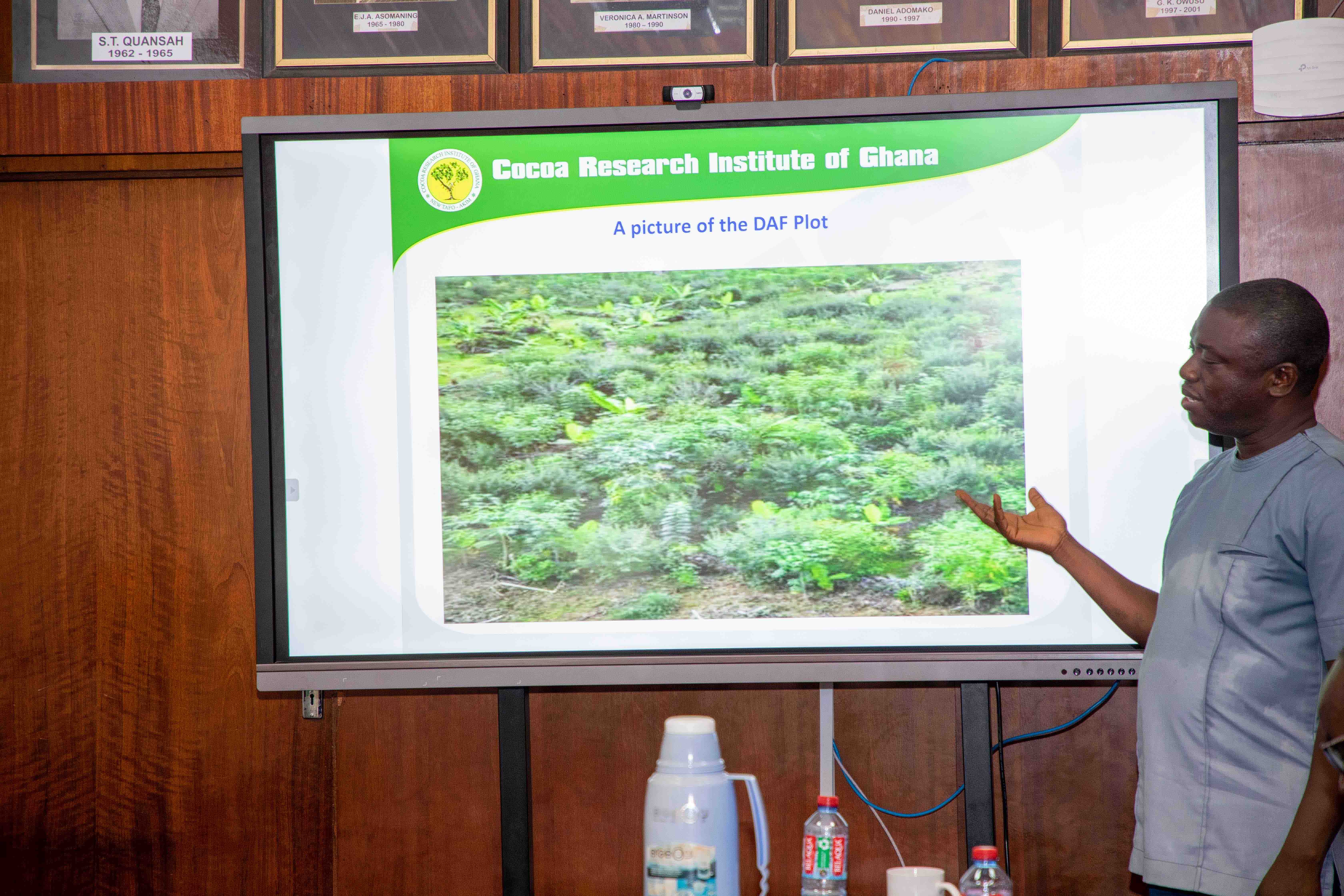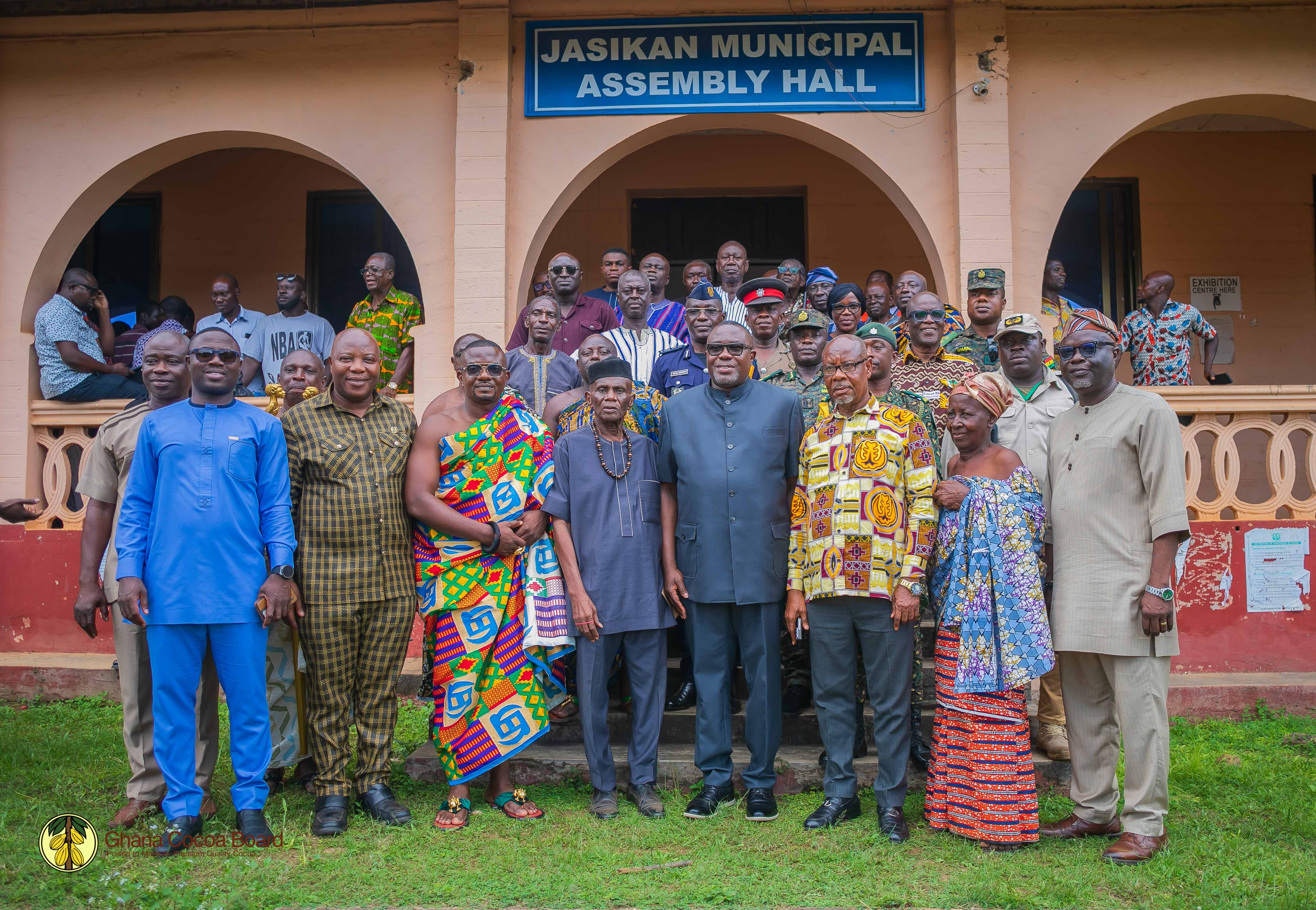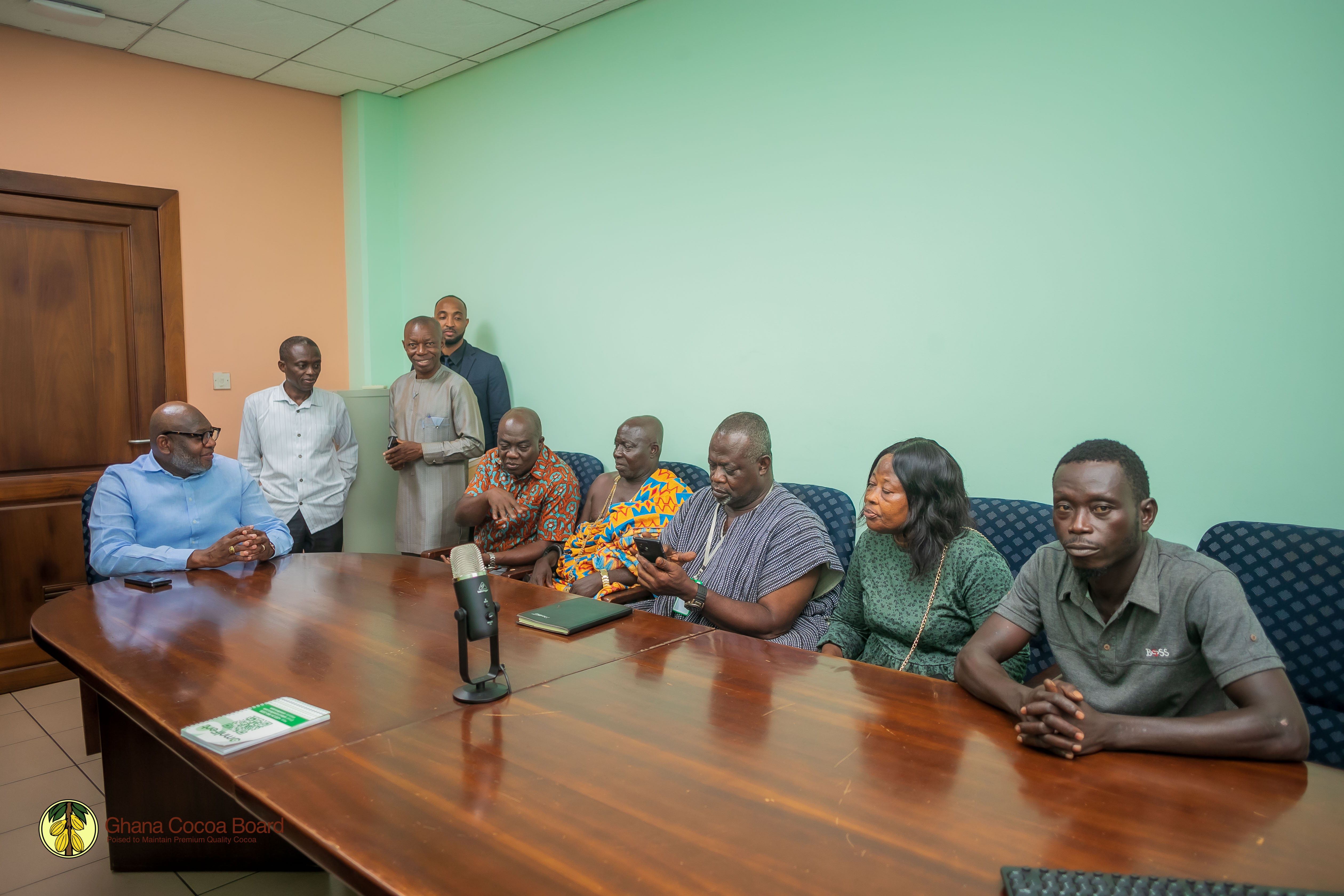DYNAMIC AGROFORESTRY: A TRANSFORMATIVE APPROACH TO GHANA’S CONVENTIONAL COCOA CULTIVATION PRACTICES

Date: 12th April 2024
Cocoa farming has long been the backbone of Ghana’s agricultural sector, playing a significant role in the country’s economy and providing livelihoods for millions of farmers. However, Conventional Cocoa Cultivation Practices (CCCP) have faced criticisms for their contribution to deforestation, soil degradation and biodiversity loss.
Notwithstanding, there is a growing recognition of the potential of Dynamic Agroforestry (DAF) as a promising alternative that will not only sustain cocoa production but also promote sustainability and resilience in cocoa farming systems while conserving the environment.
Understanding Dynamic Agroforestry
DAF is an innovative approach to farming that integrates a variety of plants and animal species in a synergistic manner to create diverse, productive, and resilient farming systems. Unlike CCCP, DAF mimics natural ecosystems through the construction of natural forest-like systems with high biomass production. Its primary emphasis lies in the natural regeneration of native trees and shrubs along with managing tree canopy through pruning.
In Ghana, DAF involves intercropping cocoa with shade trees, fruit trees, and other crops, intentionally establishing strata for the cocoa, to foster biodiversity and soil health. DAF was initially rolled out in Ghana by Kuapa Kookoo and their partners under an initiative named “Sankofa”.
CRIG and DAF
In a bid to provide technical support to the implementation team, the Cocoa Research Institute of Ghana (CRIG) allocated a 2 hector plot to establish a DAF plot to conduct research on the DAF model, focusing on the use of the lowest fertility soil to grow cocoa without touching any forests.
The first DAF plot at CRIG was established in May of 2022 and is currently 19 months old. With the welfare of Ghanaian farmers at its core, CRIG has also initiated another DAF plot, modified to conduct further research aimed at determining the most suitable DAF system that will be beneficial to the Ghanaian farmer and allow for easy adoption.
BENEFITS OF DYNAMIC AGROFORESTRY
The DAF model is centred on the principle of diversity. Planting a variety of tree species alongside cocoa trees yields various benefits such as:
1. Biodiversity Conservation: DAF, through mimicking the natural ecosystem, promotes biodiversity by providing habitat for a wide range of plant and animal species. This enhances ecosystem resilience and supports pollination.
2. Soil Health and Fertility: The presence of diverse plant species helps to improve soil fertility and structure, preventing soil erosion. The plants that are pruned are used as shrubs to build biomass for the soil which maintains and promotes soil moisture, and nutrient cycling, thereby decreasing reliance on chemical inputs.
3. Livelihood and Sustenance for Farmers: In addition to cocoa, the DAF model gives farmers the liberty to select and plant a variety of food crops that can fetch them extra income as well as serve as an extra source of food. By diversifying their crops and income sources, farmers can improve their livelihoods and food security. This also reduces their dependence on a single commodity and boosts their finances.
4. Climate Resilience: With climate change posing increasing challenges to agriculture, Dynamic Agroforestry offers a level of resilience. The integration of trees in the DAF system helps to mitigate the impacts of climate change by buffering against extreme temperatures, increasing carbon sequestration, and mitigating greenhouse gas emissions.
CHALLENGES OF DYNAMIC AGROFORESTRY
While the adoption of DAF presents promising opportunities, it also has its share of challenges. Some of these challenges include:
1. Cost of Establishment: The financial burden on farmers in establishing a DAF plot poses a significant challenge within the DAF system. There is the need for careful consideration of expenses such as acquiring the needed seedlings and shade trees, which might not be readily available in the farmers’ local environment. These costs altogether might be beyond the farmers’ means.
2. Initial Labour Requirements: Farmers who lack the resources to cover initial costs of labour for clearing the land to create a suitable surface for planting cover crops essential for DAF plots, might find it difficult to adopt the DAF system as the initial costs are relatively higher as compared to the CCCP.
3. Choice of Tree Species: To ensure the success of the DAF system, it's crucial to tailor it to benefit the farmers. This requires identifying the optimal combinations of crops and shrubs to integrate into the DAF plots for maximum yields once the cocoa trees mature. These combinations should also bring value to the farmer through generating returns from the produce. To achieve this, comprehensive technical assistance and training is required to empower farmers with the knowledge needed to make informed decisions when establishing their DAF plots.
In conclusion, DAF offers a promising pathway to transform Ghana’s cocoa industry. By embracing DAF, Ghana can unlock the full potential of its cocoa sector while protecting the environment and improving the well-being of farmers. With commitment, continuous support and investment, DAF can pave the way for a more resilient and sustainable future in Ghana’s cocoa industry.
By Agnes Annoh
Public Affairs Department
Other News / Articles you might be interested in.

EDWARD KWAME YEBOAH ADJUDGED 2025 NATIONAL BEST COCOA FARMER
Mr. Edward Kwame Yeboah of Yawhenekrom in the Mankranso District of the Ashanti ...
Read More
COCOBOD BOARD CHAIR URGES STAKEHOLDERS TO SAFEGUARD COCOA AS A NATIONAL HERITAGE
The Chairman of the Board of Directors of the Ghana Cocoa Board (COCOBOD), ...
Read More
NO GALAMSEY ON OUR LAND — TUFUHENE OF JEMA VOWS
The Tufuhene of Jema in the Aowin District of the Western South Region, ...
Read More